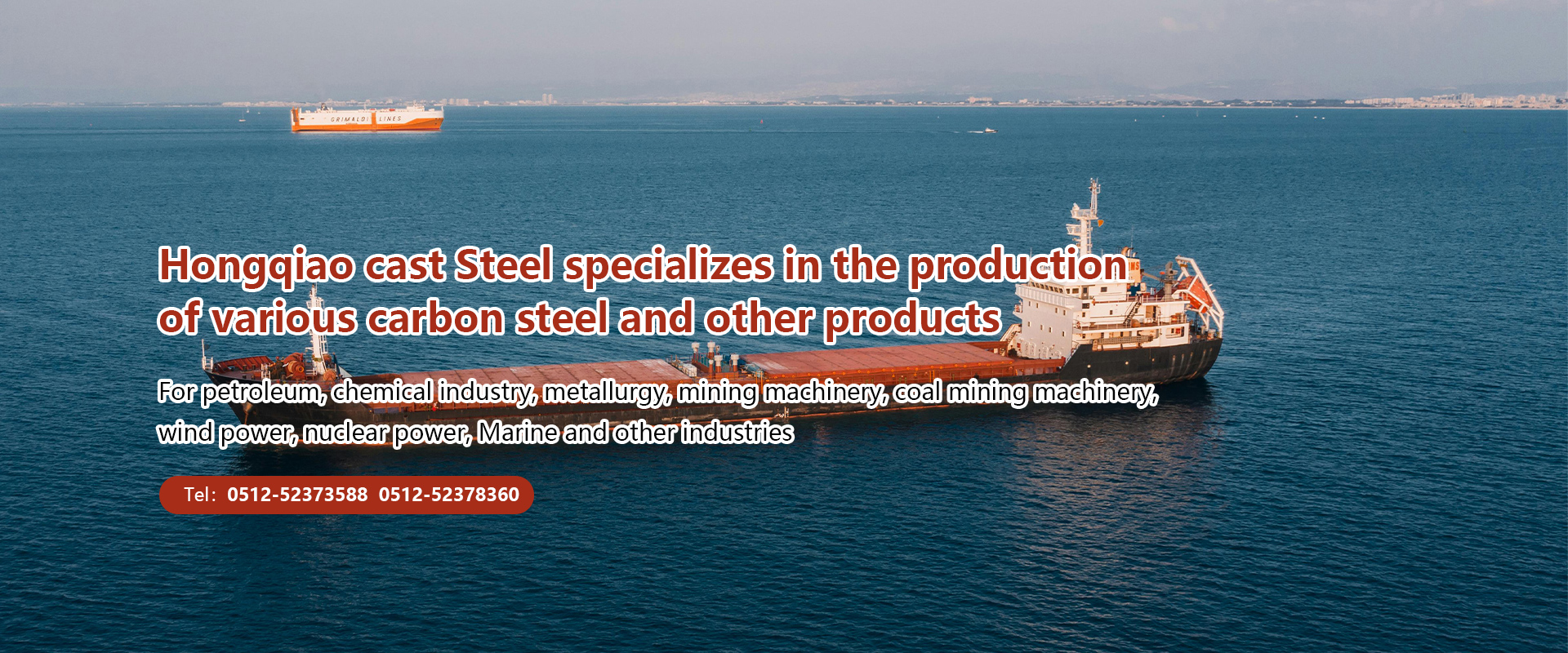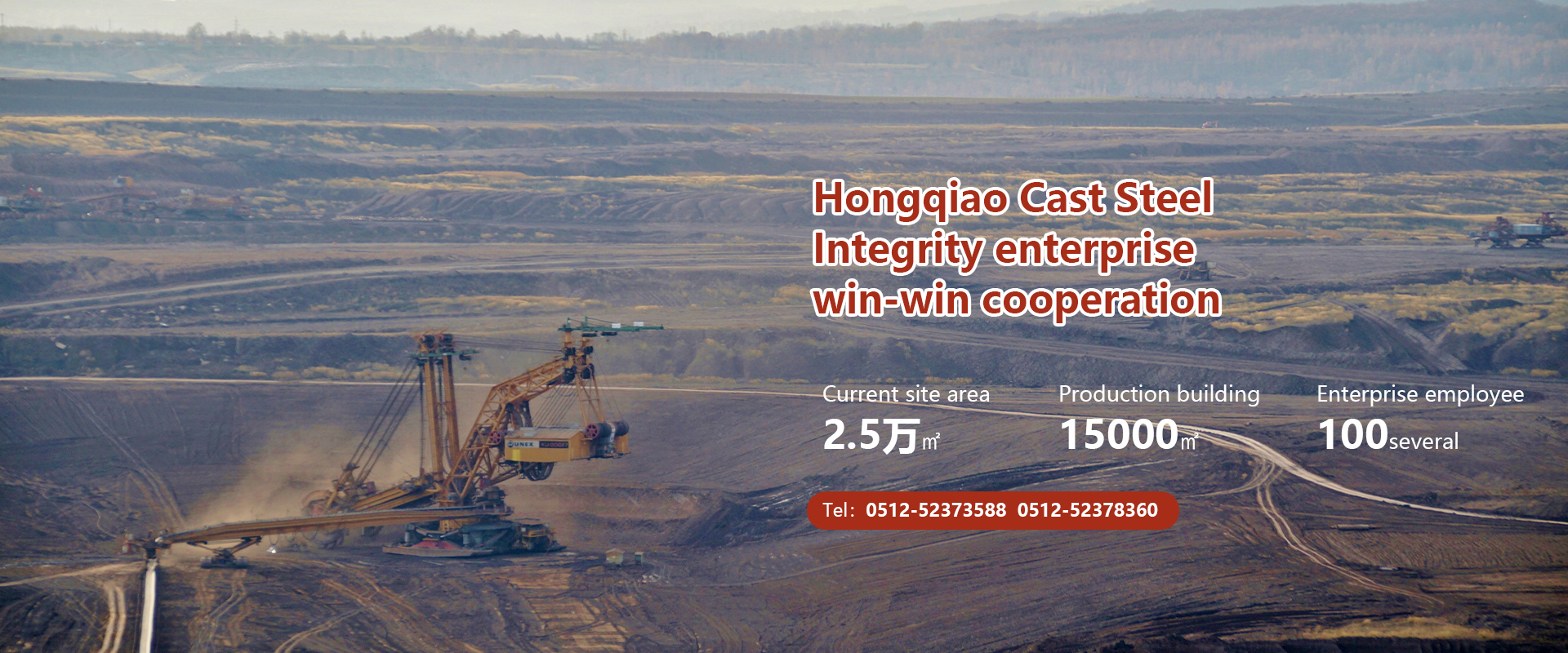Customized cast steel parts: The hardness of cast steel parts is an important factor affecting their wear. Generally speaking, it is desirable for the hardness of steel castings to be at least 0.8 times higher than that of abrasives in order to achieve better wear resistance. In daily applications, the hardness of cast steel parts is the hardness of the wear-resistant working surface after wear, rather than the initial hardness before wear. The hardness of cast steel parts is not necessarily higher, and under certain working conditions, excessively high hardness can easily lead to the initiation of microcracks.
For abrasive wear caused by fatigue spalling mechanism, the combination of high hardness, good ductility and toughness in cast steel parts, especially good fracture toughness, low crack propagation rate, and high impact fatigue resistance, is beneficial for improving wear resistance. Wear is the main failure mode of cast steel parts, especially in abrasive wear conditions. Due to the strong influence of abrasive and other working conditions, wear-resistant cast steel materials gradually lose and eventually fail.
Steel castings are applied in high-temperature or wet abrasive wear conditions. Due to high-temperature oxidation corrosion or electrochemical corrosion, wear-resistant parts are subjected to both abrasive wear and corrosive wear, which is called corrosive abrasive wear. In addition to the mechanical performance requirements for abrasive wear mentioned above, improving the anti-oxidation ability of wear-resistant steel castings, such as increasing the Cr content, will be beneficial for improving wear resistance in high-temperature wear; For wet corrosion wear, increasing the electrode potential of cast steel parts, especially reducing interfacial corrosion, will be beneficial for improving wear resistance.
Steel castings are generally used to make parts on machines that require extremely high toughness, plasticity, and strength. Steel castings in China are second only to cast iron, accounting for about 15% of the total production of castings. Generally, carbon cast steel tends to be low carbon steel ZG15, which has a higher melting point and poor casting performance, and is only used for manufacturing motor parts or carburized parts. Its casting performance is better than that of medium carbon steel, but its plasticity and toughness are poor, and it is only used to manufacture a few wear-resistant parts.
Alloy cast steel is generally divided into two categories: high alloy steel and two low-alloy steels, and cast steel parts are distinguished based on the total amount of alloy elements. The wear resistance of high alloy cast steel is very good, and it will be used to make parts for food, chemical and other equipment. And the strength of the two low-alloy steels is relatively good, and they are often used to manufacture important load-bearing parts such as high-strength gears and high-strength shafts.
In general, thin-walled and simple cast steel parts can be heated at a faster rate, while thick walled and surface reinforced parts should be heated slowly. In production, it is common to pre heat at around 650 ℃ for 1-3 hours to make the temperature inside and outside the furnace and casting more uniform, and then quickly heat up to the temperature of the water toughening treatment process.
In general, thin-walled and simple cast steel parts can be heated at a faster rate, while thick walled and surface reinforced parts should be heated slowly. In production, it is common to pre heat at around 650 ℃ for 1-3 hours to make the temperature inside and outside the furnace and casting more uniform, and then quickly heat up to the temperature of the water toughening treatment process.
Most steel castings produced by foundries are also inspected and shipped after water toughening heat treatment. Due to the presence of a large amount of carbides in the raw materials of cast steel, the toughness is very low and it is extremely prone to fracture. Therefore, cast steel parts need to undergo water toughening heat treatment, and the main purpose of heat treatment is to remove carbides. When water toughening steel castings, the following two main points are required:
① The temperature for water toughening treatment. The temperature for water toughening treatment depends on the composition of high manganese steel, usually ranging from 1050 to 1100 ℃. The water toughness temperature of high manganese steel with high C content or high alloy content is taken as the upper limit. However, excessively high water toughness temperatures can cause severe decarburization on the surface of castings, leading to rapid grain growth and affecting their performance.
② The speed of heating and warming up. High manganese steel has poorer thermal conductivity than ordinary carbon steel. If excessive stress is generated during heating, cast steel parts are prone to cracking. When the carbon content and mechanical properties of the inner and outer layers are significantly different due to the addition of carbon on the surface of the casting, microcracks are more likely to occur in the added carbon layer.
Changshu Hongqiao Cast Steel Co., Ltd. mainly produces various specifications of carbon steel, high, medium and low alloy steel, stainless steel, heat-resistant steel, high manganese steel, and high chromium cast iron. We provide high-quality customized steel castings for industries such as petroleum, chemical, metallurgical, mining machinery, coal mining machinery, wind power, nuclear power, and marine. We also offer customized steel castings for marine use, ABS marine engineering services, and cast steel for export overseas.





